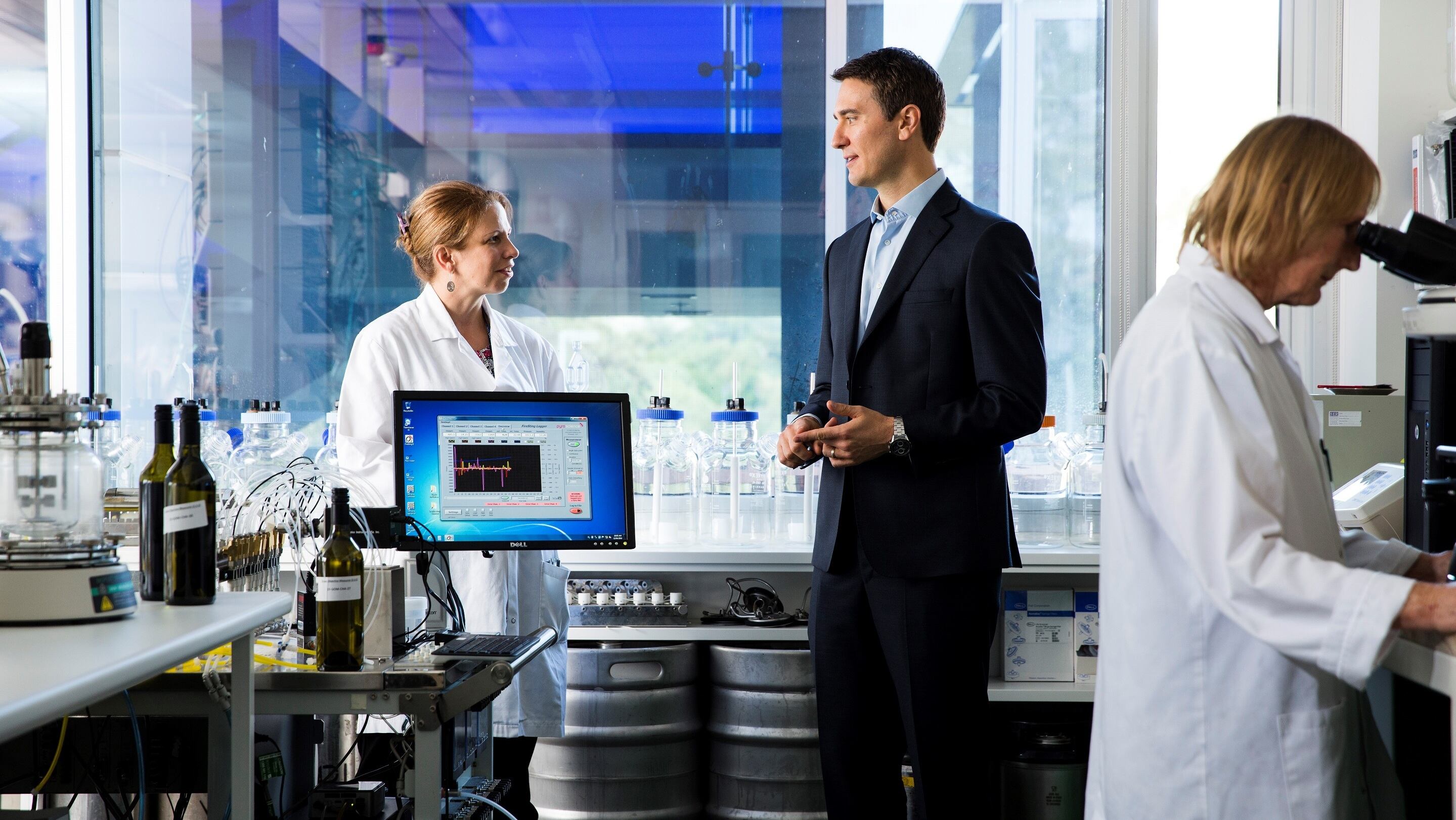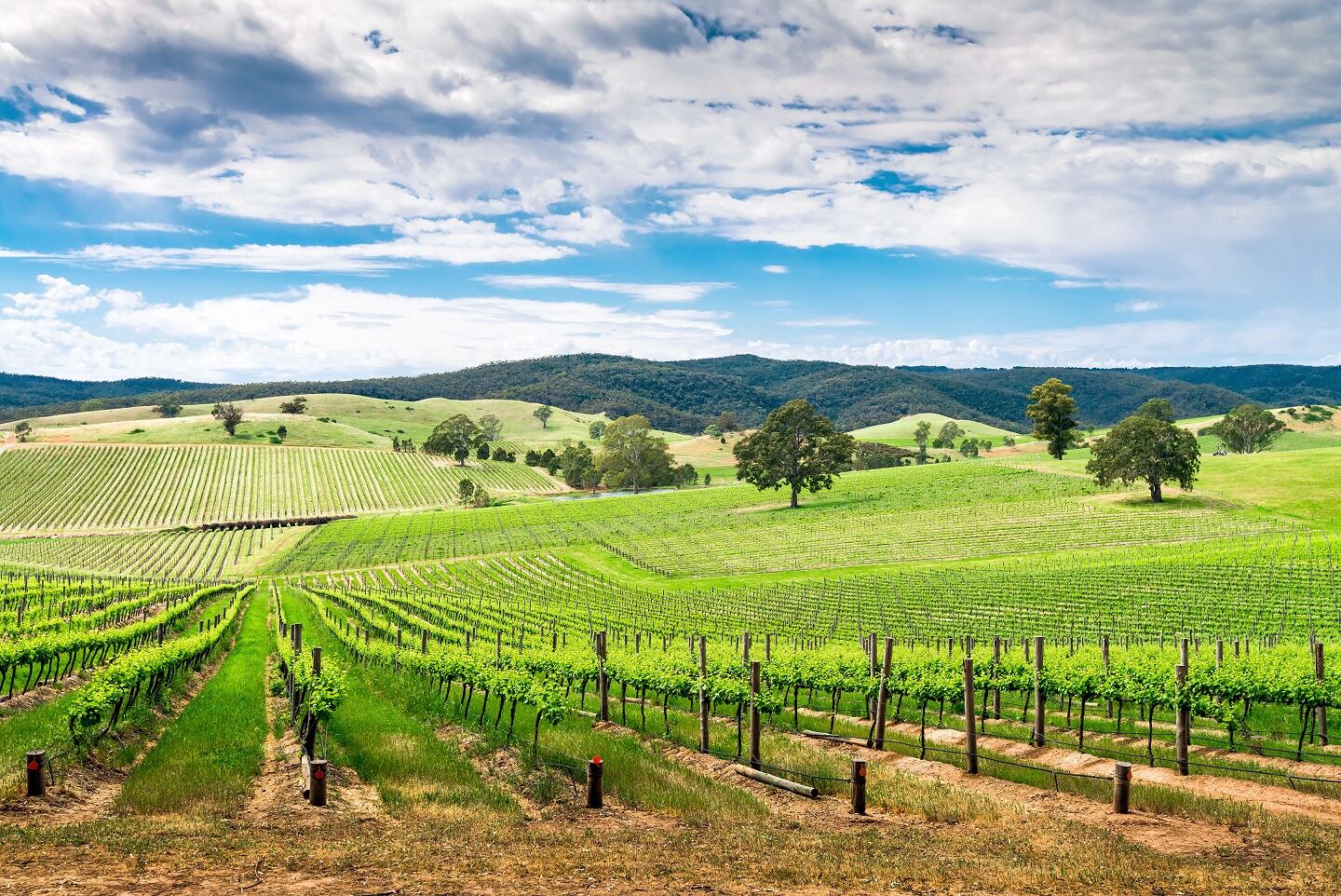In February, Dr Johnson is due to leave the institute he has led since 2011, when he takes up a pro-vice-chancellorship at Macquarie University in Sydney. He leaves the industry-owned AWRI after a period of profound change that has seen China become the leading market for Australian wine and dramatic changes in the wine-growing environment.
Re-positioning Australian wine
The institute is quite unusual within Australian academia, operating not as part of a university or as a government department. The wine industry nominates its board and controls the culture and research agenda. Effectively, its success or failure is measured by the state of the Australian wine industry as a whole.
At the time Dr Johnson arrived at the AWRI, the Australian wine industry had just come off the back of a significant boom. The Nineties and Naughties had been a time of tremendous expansion but it had begun to encounter some issues, particularly related to its major export markets of the United States and United Kingdom, where sales had started to decline.

“When I came into the role of managing director in 2011, it was around the time when a number of structural changes were being made to re-position Australian wines in overseas export markets,” he recalled.
“We placed our focus on value growth, rather than volume, and really getting to understand the consumers in emerging markets like China.
"Our job was to go into China and look at consumer preferences while working with Australian producers to manufacture products that suited that market.”
Supported by the AWRI’s work, Australian wine began to explode in China to become a billion-dollar market, making it a critical destination for producers.
In the last year, the value of exports there grew at a rate of 7% to be worth A$1.2bn (US$820m), according to Wine Australia. China now accounts for over 40% of the value of all the country’s international wine shipments, despite falling volumes.
Premium focus
That the Chinese are buying higher-value wines is significant, and bears no little testimony to the AWRI’s research under Dr Johnson. To tap into the boom in demand there for wine, the institute compiled a body of work looking into collective palate of Chinese consumers. This has been used by winemakers to inform the product styles they have been making for export to China’s diverse markets.
What complicates matters is the vast variety of cuisines dotted across all of these markets and the differences in the style of eating in the Orient and wine’s traditional Western heartlands.
Wine-matching for the Western diet is based on the idea that you have a range of different courses that are arranged sequentially.
“We might start off with something light maybe matched with a sparkling wine, then you go for a white with a fish course and maybe something heavier with a red wine. You could finish with something sticky and fortified at the end,” said Dr Johnson.
“That sort of eating style is different in Asia: you have lazy Susans in the middle of the table, you have sweet, sour, textural and non-textural cuisine all on a plate at the same time. So you need to think about accommodating the wines you are making to that different style of eating a different cuisine.”
Other types of descriptors are also being used, based on the AWRI’s studies.
“If we refer to a certain fruit or flour or vegetable or aroma that is not known in China, there’s no point having that on the label on the back of your bottle. The language you use in your description has to be something that will resonate with that market. The AWRI and many of our collaborators have worked in that space.”
As the institute looked deeper into the Chinese market, the country has itself also emerged as a significant contributor to the world’s wine research agenda, with an increasing number of Chinese students travelling to Australia to study for PhDs in wine science. These in turn have been working on AWRI research projects.
This growing interest in studying wine has brought about collaborations between the two countries. Likewise, it has helped bring Australian and Chinese regulators closer together to ensure decisions are made based on evidence.
“It’s all a very multi-faceted and a significant part of what the AWRI has been working on,” Dr Johnson added.
Understanding climate change

In tandem with the institute’s increased emphasis on China under its managing director, new science and a changing climate have forced the industry to look differently at sustainability and the environment.
A new era of systems biology and increasing computational power can wrangle massive datasets to answer fundamental questions about vines and the conditions they grow in.
Investment into people and infrastructure has enabled the institute to look at the genomes, proteomes and metabolomes of plants, yeast and bacteria, and last year the AWRI published the world’s first genome of the chardonnay grape vine. This led to questions being asked surrounding markers in the chardonnay genome being used to differentiate clones.
But the broader story from the industry has been one of extraordinary resilience in the face of a changing climate, with the AWRI expected to help create solutions and opportunities for the industry in the face of this.
“When I first started, I would say there was not universal buy-in to the idea of climate variability and climate change. What you would see then was natural climate cycles,” he remembered.
“Now you wouldn’t find many growers in Australia who wouldn’t say their operation hasn’t been affected in the vineyard and the winery by a changing climate.”
In Australia, grapes are ripening at different periods. This has led to white and red varieties being picked at similar times, whereas they were once neatly distributed. There have also been changes in the timing and availability of rainfall, with prolonged drought continuing to affect large parts of the country. Yet despite this, experts believe the best wine ever made in Australia is currently coming off the vine.
“These challenges are all being rolled together to become something important that the AWRI has been working on over the last 3-4 years. Our work has been around sustainability in its broadest sense, including labour practices, social licence and economic sustainability too,” said Dr Johnson.
“These are all wrapped up into the ability of the producer to use a given block of land with the resources they have to operate into the future. Sustainability has been one of the catchwords to define the industry discussion, and this will only continue.”
After the outgoing managing director vacates his desk and moves to a new role in New South Wales, he expects to miss the wine industry greatly.
Still, he hopes to work with it in some capacity, and it will help that he will have a new colleague in his AWRI predecessor, Sakkie Pretorius, when he takes up his research innovation portfolio at Macquarie.
“I’d expect both of us to use our creativity to find ways we can engage so we can continue to be part of the industry we love,” said Dr Johnson.
“It’s been one of the great honours of my life to have led the AWRI, working closely with the Australian wine industry. I’m so proud of what has been achieved for Australian grape and wine producers. The institute is ideally placed to undertake a leadership transition, and I wish it every success for the future.”
Pictures top to bottom: Jacqui Way Photography; PIRSA.

